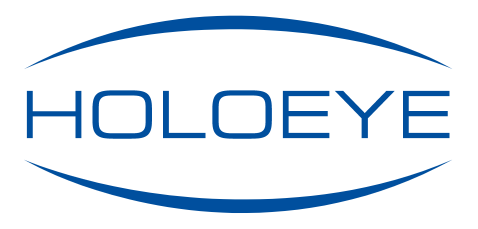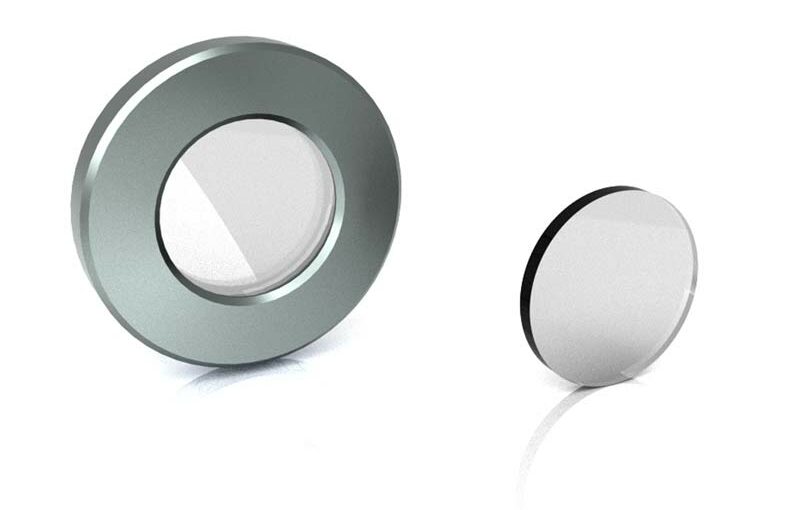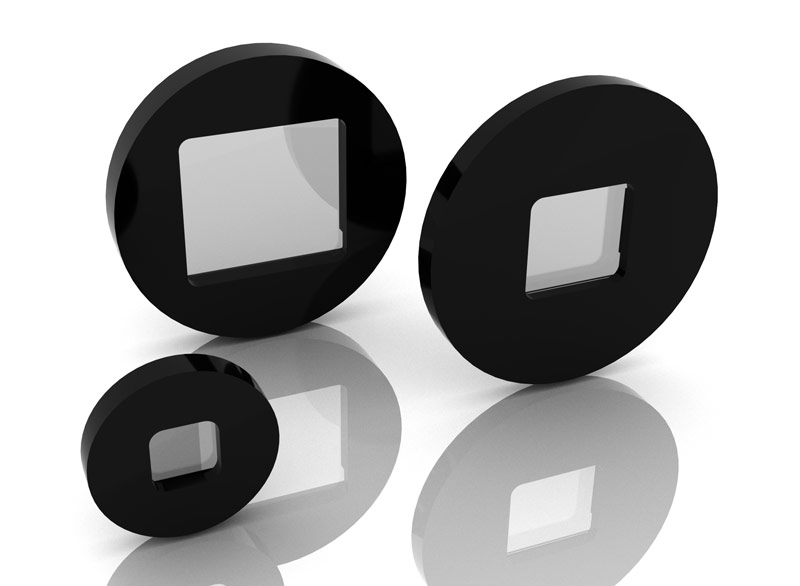Standard Diffractive Optical Elements
HOLOEYE offers a steadily growing range of affordable off-the-shelf standard Diffractive Optical Elements (DOE). These DOEs are either replicated using polymer materials or produced in glass materials.
Standard Polymer DOEs:
Our standard polymer DOEs are produced by replication, using materials like polymethyl methacrylate (PMMA) or polycarbonate (PC). With the standard size of 8 mm in diameter these elements fit well into numerous standard laser modules:
Ø 8 mm x 0.6 mm
Ø 8 mm x 1 mm
Ø 8 mm x 1.2 mm
For testing in laboratory environments, the DOEs are available mounted in a 12.7 mm x 2.2 mm stainless steel adapter ring.
HOLOEYE standard DOEs enable laser module manufacturers and distributors to create higher-value product lines with almost no investment. Please do not hesitate to request size adaptations or other customizations. These will be offered based on a moderate NRE budget.
Standard Glass DOEs:
The standard glass DOEs are made of fused silica glass by etching, or are replicated using acrylate on soda-lime glass substrates. All glass DOEs feature an anti-reflective coating on at least the plain surface side, some types also on the microstructure surface.
Compared to Diffractive Optical Elements made from polymer materials, the glass DOEs are more ruggedized, scratch resistant, have lower thermal expansion coefficients (CTE), can easily withstand exposure to UV radiation without degradation, and higher temperatures and laser powers.
Dependent on the type the glass DOEs are available in the following size:
Arylate-on-Soda-Lime glass: 5.2 x 4.7 mm
Fused Silica: 5.0 x 5.75 mm
Fused Silica: 9.95 x 9.35 mm
Fused Silica: 15.0 x 14.1 mm
In sample quantities, all versions are available in standard frames for use with standard laboratory mounts.
Ø 12.7 x 2 mm holder (for 5.2 x 4.7 mm / 5.0 x 5.75 mm DOEs)
Ø 25.0 x 2.2 mm holder (for 9.95 x 9.35 mm DOEs)
Ø 25.0 x 3.5 mm holder (for 15.0 x 14.1 mm DOEs)
Please note: If you click at any of the DOEs listed at the table below you get further information on each DOE. The images of the patterns are schematic drawings. In a real setup, higher diffraction orders can be visible, and the undiffracted order can appear as a bright spot in the center.
Material
Pattern Type
Wavelength Range
Full Pattern Angle
DOE#
Material
Description
Wavelength Range
Full Pattern Angle


